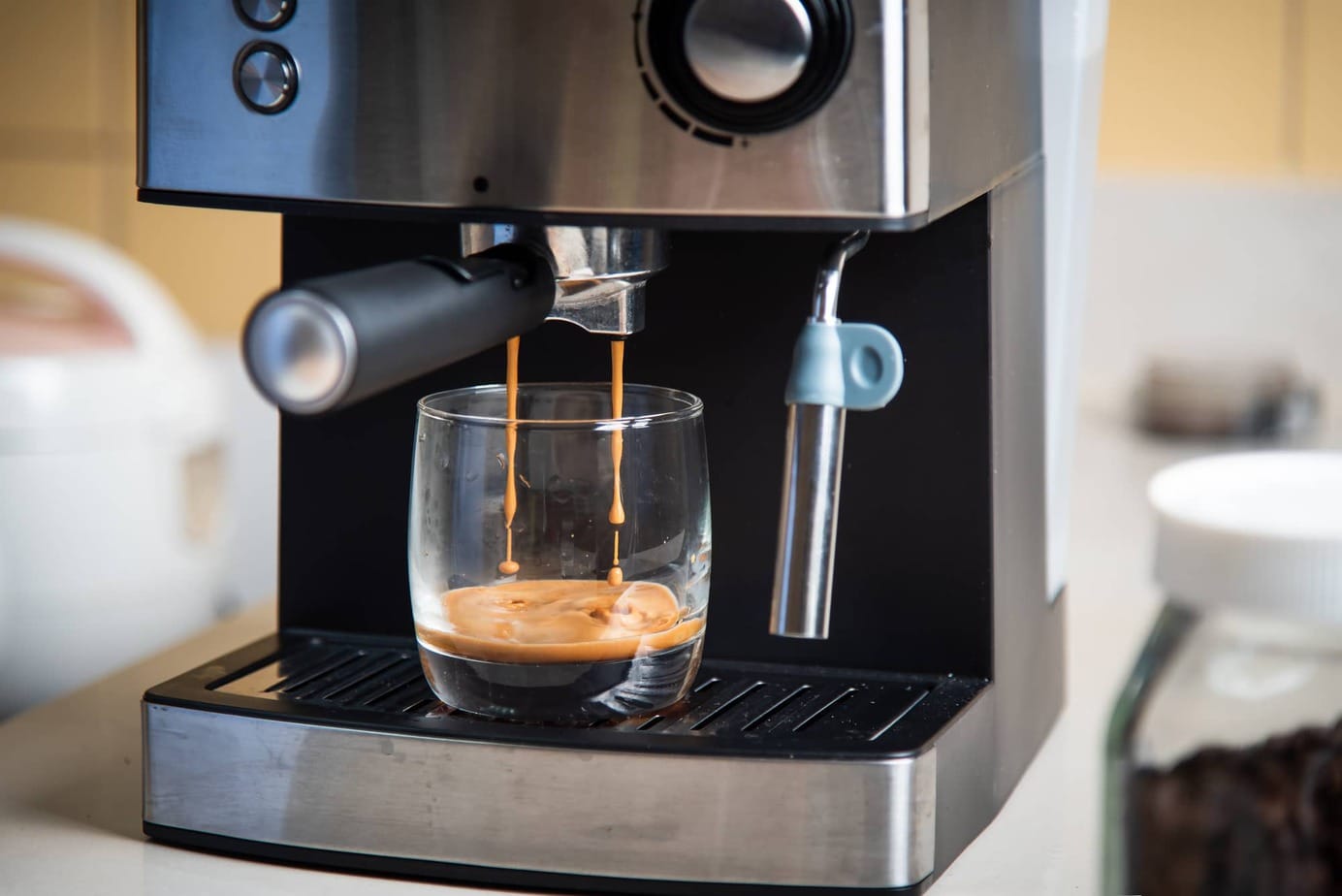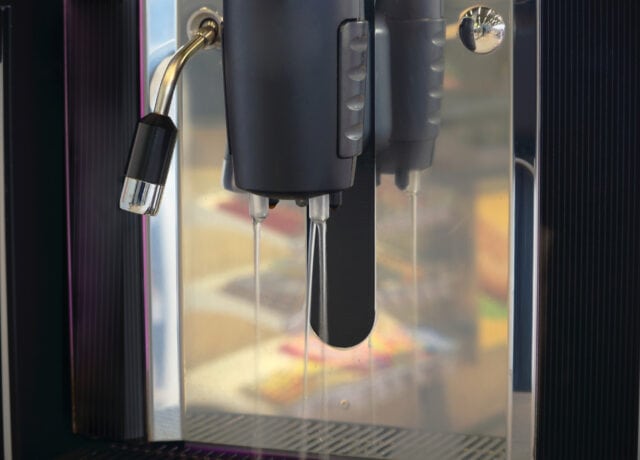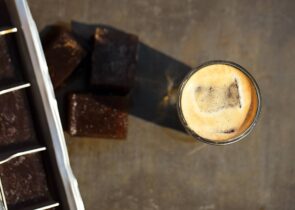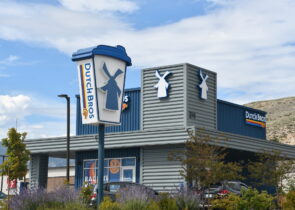Having that perfect creamy espresso is something that we coffee lovers are always trying to achieve. So how do you extract the best flavor from the coffee grounds?
It all begins with exerting the perfect amount of pressure during the extraction process to pull out all of the wonderful flavors and aromas. This article will explain the importance of pressure to the coffee-making process and which bar pressure level is best, the 9-bar espresso machine, or 15 bars.
What Are Bars of Pressure?
The barometric form measures pressure. The level of barometric pressure is represented in bars. Therefore, the higher the bars, the more pressure is exerted. A bar is equivalent to a metric unit. Therefore, 1 bar is a unit of measurement equal to the atmospheric pressure at sea level.
As it relates to espresso, pressure is integral because it gauges the energy needed to force hot water through the coffee grounds during the extraction process.
So when an espresso coffee maker uses 9 bars, that means water is being forced through the bed of coffee grounds at nine times more pressure than the natural atmospheric pressure. The same idea applies to coffee makers with 15 bars of pressure.
Original espresso machines utilized steam pressure to operate; however, thanks to the advent of electricity, steam pressure has been replaced by semi-automatic, rotary pumps in automatic or vibratory machines.

Pressure and Espresso Machines
When properly extracting espresso, the machine has to exert a specific number of bars of pressure, which requires estimation. There’s no magic number for how many bars it takes to make great-tasting espresso.
Generally, a typical espresso maker produces about 9 bars of pressure. As previously mentioned, this is equal to nine times the pressure exerted by our surrounding atmosphere.
To put this into perspective, the air in a car tire is typically at a pressure of 30 PSI, or pounds per square inch. Conversely, the 9 bars the espresso machine exerts measure approximately 130 psi or over four times the psi exerted by the air inside a tire.
On the other hand, some argue that 15 bars are the optimum brew pressure to perfectly extract the flavor and aroma of an awesome espresso.
Types of Espresso Machines
Below are the three kinds of espresso machines according to how the device applies pressure.
Levers: Levers are the most common method of applying pressure to a shot of espresso. Many upscale coffee shops typically have a barista present that knows how to use a lever machine. The lever provides optimal control over the amount of pressure you use since you can adjust it manually.
Steam power: Coffee makers that use steam are generally on the lower end of the spectrum of domestic machines. The steam is hot enough to boil the water, and that’s what pushes the grounds through, allowing you to pull the shot. However, remember that this method isn’t powerful enough to extract crema.
Pump machines: A pump machine is standard in most coffee shops. The higher quality espresso machines let you change different settings like the water temperature or bars of pressure. This is probably the most consistent and reliable of the three types of espresso machines. It also requires a skilled individual to operate it.
How Many Bars Of Pressure For Espresso: 9 Bar vs. 15 Bar
What’s universally understood is that 9 bars of pressure are the goal for a quality espresso machine. It has been this way for over 100 years. That is when Luigi Bezzerela, an Italian inventor, made the first modern espresso machine.
Bezzera discovered that you’d get the best results for a shot of perfect espresso if you pushed water at 9 bars of pressure through finely-ground coffee. That technique worked best when the water was 90-95°C, which is the ideal brew temperature.
Pressure higher than 9 bars created an espresso that was too strong and thick, and anything below 9 bars made the espresso weaker. Thus, espresso machines with 9 bars are the standard for most coffee makers today.
That may leave you wondering why some semi-professional and domestic machines claim to produce 15 bars and higher if 9 bars is the sweet spot. Should you purchase a 15-bar espresso machine?
If you’ve ever seen machines advertise 15 or 18 bars, you probably believed that the higher the number, the better the espresso. In reality, those types of coffee makers are typically cheaper and smaller than a professional espresso machine.
Honestly, these budget espresso machines lose most of the pressure between the brew head (pump) and the group head. So even though the machine says it creates 15 bars of pressure at the start, the pressure is much lower by the time it gets to the brew head. You’re likely brewing at 9 bars by the time your shot of espresso gets pulled.
If you’ve set your machine up correctly, the brew head pressure should be at 9 bars regardless of any pressure the pump itself creates. You may be surprised to know that a standard built-in feature for many high-end espresso machines is a valve that prohibits the coffee machine from producing over 9 bars of pressure.
Frequently Asked Questions
Here are some answers to common questions about espresso.
How long should you extract espresso?
The standard extraction time for espresso shots is 20-30 seconds. If you go too short or too long, check your grind, the dosage, and the tamp. You may have to adjust these settings according to your preferences.
What is the crema on an espresso?
Crema is the final stamp on a delicious cup of espresso. It has a creamy texture, and the caramel color makes the espresso “pop.” This foamy, frothy puff is the product of the hot water emulsifying the coffee bean oils. It floats to the top of the espresso with those signature tiny bubbles.
Final Thoughts
In the debate between 9 bars or 15 bars of pressure, our research indicates that you’ll want to stick with 9 bars. However, remember that even if the box says it’s a 15-bar machine or higher, by the time you pull the shot, you were probably at 9 bars anyway.
There is a science to the art of espresso-making, so it’s important to know what circumstances have to take place for you to get the best cup of coffee time after time. Now that you know what bars are and what pressure means concerning an espresso machine, you can select the best product to suit your needs.
Happy Caffeinating!







